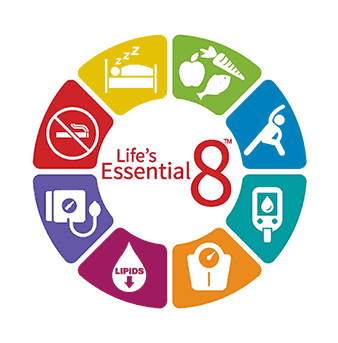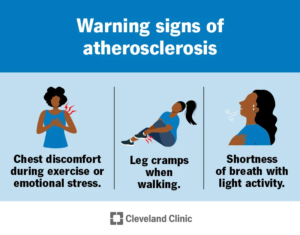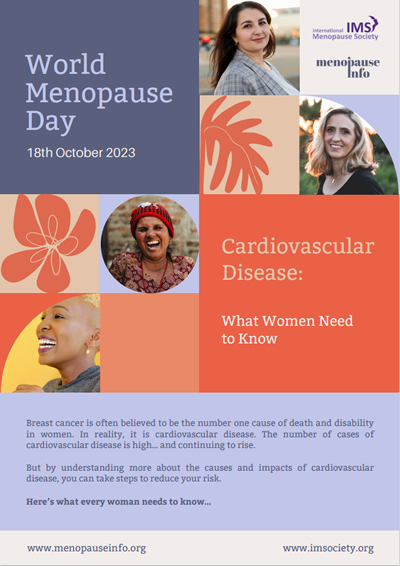“Atherosclerosis is the build-up of fatty material (atheroma)
inside your arteries. It’s a potentially serious condition
that causes most heart attacks and strokes…”.1
Umbrella
What may the Atherosclerosis Umbrella include?
Depending on the Source (DotS) this Umbrella may include:
- Arteriosclerosis
- Atherosclerosis
- Hardening of the Arteries
Arteriosclerosis and Atherosclerosis
Is there a difference between arteriosclerosis and atherosclerosis?
In Arteriosclerosis / Atherosclerosis: Overview the (United States) Mayo Clinic explain:
In What Is Atherosclerosis? Confused About Terms? the (United States) National Heart, Lung, and Blood Institute (NHLBI) note:
Atherosclerosis
What is atherosclerosis?
DotS the definition of atherosclerosis may vary. The Mayo Clinic’s definition is:
The NHLBI’s definition is:
In Atherosclerosis the British Heart Foundation’s definition is:
Cause
What causes atherosclerosis?
In What Is Atherosclerosis? How It Starts and How It Progresses the American Heart Association elaborate on:
Many scientists believe plaque begins when an artery’s inner lining (called the endothelium) becomes damaged. Four possible causes of such damage are:
- Elevated levels of cholesterol and triglycerides in the blood
- High blood pressure
- Cigarette smoking
- Diabetes”.7
Common or Not
How common is atherosclerosis?
In Atherosclerosis: What Is the NHLBI note:
Risk Factors
What do atherosclerosis risk factors include?
In Atherosclerosis the (United States) Cleveland Clinic explain:
In Atherosclerosis: Things You can Do To Help With Atherosclerosis the NHS note:
- Being over 65 years of age
- Smoking
- Having high cholesterol
- Having high blood pressure
- Having close relatives who have cardiovascular disease”.10
Prevention
How can atherosclerosis be prevented?
In Atherosclerosis: How Can I Prevent Atherosclerosis? according to the Cleveland Clinic:
 “You may not be able to prevent atherosclerosis. But you can reduce your risk and lessen the effects of the disease. Here are some steps you can take:
“You may not be able to prevent atherosclerosis. But you can reduce your risk and lessen the effects of the disease. Here are some steps you can take:
- Eat foods low in saturated fat, trans fat, cholesterol, sodium (salt) and sugar
- Exercise regularly. Start with short walks and build up to 30 minutes a day most days of the week
- Keep a weight that’s healthy for you. Ask your provider what that should be
- Manage any health conditions, especially diabetes, high blood pressure and high cholesterol
- Don’t use tobacco products
- Have a yearly checkup with a healthcare provider”.11
Health Care Provider
What if I think I have atherosclerosis?
In Arteriosclerosis / Atherosclerosis: Symptoms & Causes – Overview: Symptoms – When To See A Doctor the Mayo Clinic explain:
Early diagnosis and treatment can stop atherosclerosis from worsening and prevent a heart attack, stroke or another medical emergency”.12
Health Topics A-Z
Where may I find Health Topics A-Z related to Atherosclerosis
In Health Topics A-Z you may find:
Links
Where may I find Links related to Atherosclerosis?
Your Country may have Links similar to:
Links
This Links List to third party websites is neither comprehensive nor exhaustive. Inclusion on this Links List does not imply endorsement or recommendation. Non-inclusion on this Links List does not imply non-endorsement or non-recommendation. Third party websites are not under the control of Meno Martha International Menopause Directory. Third party websites may contain explicit medical images and/or sexual references. Please read Meno Martha International Menopause Directory’s Links Policy before proceeding to a Link. Please contact Webmaster if you experience a problem with a Link.- About Stroke
- Arteriosclerosis / Atherosclerosis: Diagnosis & Treatment
- Arteriosclerosis / Atherosclerosis: Symptoms & Causes
- Atherosclerosis
- Atherosclerosis
- Atherosclerosis
- Atherosclerosis
- Atherosclerosis
- Atherosclerosis
- Atherosclerosis: Things You can Do To Help With Atherosclerosis
- Atherosclerosis (Arteriosclerosis)
- Atherosclerosis [+ Video: Coronary Heart Disease, Clogged Arteries and Atherosclerosis]
- Atherosclerosis [Video]
- Atherosclerosis and Stroke
- Atherosclerosis – Your Quick Guide
- Atherosclerosis: Arterial Disease
- Atherosclerosis: Atherosclerosis and Cholesterol
- Atherosclerosis: Diagnosis
- Atherosclerosis: Hardening of the Arteries
- Atherosclerosis: Risk Factors
- Atherosclerosis: Screening and Prevention
- Atherosclerosis: Signs, Symptoms and Complications
- Atherosclerosis: Treatment
- Atherosclerosis: What Is [+ Diagram]
- BMS TV: Coronary Heart Disease (CHD)
- BMS TV: Menopause – Weight Gain, Nutrition and Lifestyle
- Cardiovascular Diseases (CVDs)
- Cardiovascular Heart Disease
- Cholesterol
- Cholesterol
- Cholesterol Myths and Facts
- Coronary Artery Disease
- Development of Atherosclerosis
- Diabetes
- Diabetes – Causes, Symptoms & Treatment
- Goredforwomen.org [Go Red for Women]
- Hardening of the Arteries
- Healthy Living
- Heart Attack
- Heart Attack
- Heart Disease
- Heart Disease: It’s Not Just for Men – Questions To Ask Your Doctor
- Heart Doctor Explains Cholesterol Levels
- Heart Health: Are You At Risk for Heart Disease? [+ Video]
- Heart-Healthy Diet: 8 Steps To Prevent Heart Disease
- High Blood Pressure
- High Blood Pressure
- High Cholesterol
- High Cholesterol
- How To Get Your Cholesterol Tested
- How To Make Healthy Food and Healthy Lifestyle Choices Now
- Ischemic Heart Disease: Screening and Prevention
 Ischemic Heart Disease: What Should Women Know?
Ischemic Heart Disease: What Should Women Know?- Know Your Numbers? They Could Just Save Your Life
- Know Your Risk
- Life’s Essential 8
- Making Mayo’s Recipes: Two Days’ Worth of Heart-Healthy Menus
- Menopause and Heart Disease
- Menopause and Heart Disease
- National Center for Complementary and Integrative Health: Cardiovascular Disease
- National Center for Complementary and Integrative Health: Chelation for Coronary Heart Disease: What You Need To Know
- National Center for Complementary and Integrative Health: How Safe Is This Product or Practice?
- National Center for Complementary and Integrative Health: Natural Doesn’t Necessarily Mean Safer, or Better
- Peripheral Arterial Disease [Video]
- Prevention and Healthy Living
- Prevention and Treatment of High Cholesterol (Hyperlipidemia)
- Quit Tobacco Today! [+ Video: Meet Florence – She Can Help You Quit Tobacco!]
- Real Women
- Recipes [American Heart Association]
- Smokefree [NHS, United Kingdom]
- Smokefreewomen [United States]
- Smoking
- Statins: Are these cholesterol-lowering drugs right for you?
- Stroke
- Symptoms of A Heart Attack and Stroke In Women
- Videos & Podcasts: Videos – Interviews: Cardiovascular Disease In Women
- Watch, Learn and Live: Atherosclerosis
- Webinars: Previous – Cardiovascular Disease
- What Is Atherosclerosis?
- What Is Cholesterol?
Sources
Where may I find the Sources quoted?
You may find the Sources quoted at:
Sources
- Atherosclerosis. Page Last Updated: September 2022. British Heart Foundation https://www.bhf.org.uk/informationsupport/conditions/atherosclerosis Accessed: 08 December 2023
- Arteriosclerosis / Atherosclerosis: Overview. 01 July 2022. Mayo Clinic https://www.mayoclinic.org/diseases-conditions/arteriosclerosis-atherosclerosis/symptoms-causes/syc-20350569 Accessed: 08 December 2023
- What Is Atherosclerosis? Confused About Terms? Last Updated: 24 March 2022. What Is. National Heart, Lung, and Blood Institute https://www.nhlbi.nih.gov/health-topics/atherosclerosis Accessed: 08 December 2023
- Arteriosclerosis / Atherosclerosis: Overview. 01 July 2022. Mayo Clinic https://www.mayoclinic.org/diseases-conditions/arteriosclerosis-atherosclerosis/symptoms-causes/syc-20350569 Accessed: 08 December 2023
- Atherosclerosis. What Is. Last Updated: 24 March 2022. National Heart, Lung, and Blood Institute https://www.nhlbi.nih.gov/health-topics/atherosclerosis Accessed: 08 December 2023
- Atherosclerosis. Page Last Updated: September 2022. British Heart Foundation https://www.bhf.org.uk/heart-health/conditions/atherosclerosis Accessed: 08 December 2023
- What Is Atherosclerosis? How It Starts and How It Progresses. Last Reviewed: 06 November 2020. American Heart Association https://www.heart.org/en/health-topics/cholesterol/about-cholesterol/atherosclerosis Accessed: 08 December 2023
- Atherosclerosis. Last Updated: 24 March 2022. What Is. National Heart, Lung, and Blood Institute https://www.nhlbi.nih.gov/health-topics/atherosclerosis Accessed: 08 December 2023
- Atherosclerosis. Last Reviewed: 06 March 2023. Cleveland Clinic https://my.clevelandclinic.org/health/diseases/16753-atherosclerosis-arterial-disease Accessed: 08 December 2023
- Atherosclerosis: Things You can Do To Help With Atherosclerosis. Page Last Reviewed: 30 January 2023. NHS https://www.nhs.uk/conditions/atherosclerosis/ Accessed: 08 December 2023
- Atherosclerosis. Last Reviewed: 06 March 2023. Cleveland Clinic https://my.clevelandclinic.org/health/diseases/16753-atherosclerosis-arterial-disease Accessed: 08 December 2023
- Arteriosclerosis / Atherosclerosis: Symptoms & Causes – Overview: Symptoms – When To See A Doctor. 01 July 2022. Mayo Clinic https://www.mayoclinic.org/diseases-conditions/arteriosclerosis-atherosclerosis/symptoms-causes/syc-20350569 Accessed: 08 December 2023






